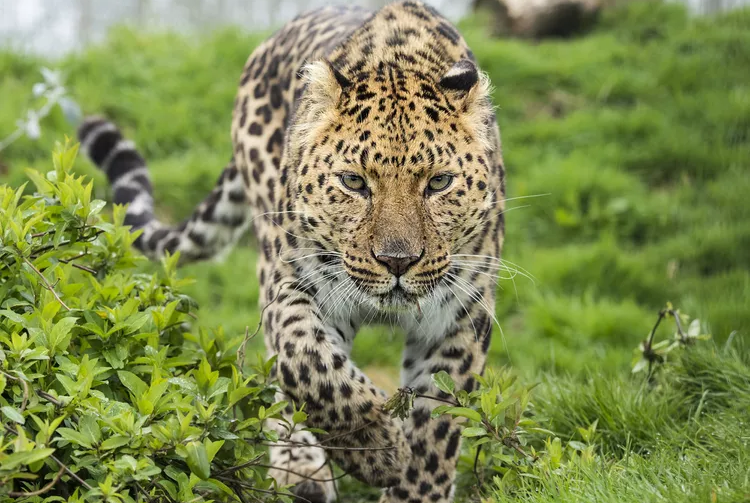The black panther is one of nature’s most elusive and mysterious predators. Often associated with strength, stealth, and elegance, the black panther has fascinated humans for centuries. But contrary to what many believe, the black panther isn’t a distinct species — it’s actually a term used for melanistic (black-coated) leopards or jaguars. Their dark appearance, solitary behavior, and nocturnal habits make them both mesmerizing and hard to study in the wild.
Here are 10 fascinating facts about the black panther that will deepen your appreciation for this extraordinary animal.
1. Black panthers are not a separate species
One of the most common misconceptions is that black panthers are their own species. In reality, the term “black panther” refers to big cats with melanism, a genetic mutation that causes their fur to appear dark or black. In Africa and Asia, black panthers are actually leopards (Panthera pardus), while in the Americas, they are jaguars (Panthera onca). Both species can have black or spotted coats, depending on genetics.
2. Melanism is the opposite of albinism
Melanism, which causes the black coloration, is the result of an overproduction of the pigment melanin in the animal’s skin and fur. This is the opposite of albinism, which occurs when there is too little melanin. Melanistic leopards and jaguars may appear completely black, especially at night, but in good lighting or close-up photos, you can often still see their rosette patterns under the dark fur.
3. Black panthers are extremely rare in the wild
Black leopards and jaguars are very rare in the wild, especially because melanism is a recessive genetic trait. It only occurs when two copies of the gene responsible for melanin production are inherited. In Africa, sightings of black leopards were once thought to be a myth, until recent camera trap evidence in Kenya’s Laikipia County confirmed their existence. In South America, melanistic jaguars are slightly more common, especially in dense, forested areas like the Amazon.
4. Their dark coat helps them in certain environments
While being black might make animals more visible in some habitats, it actually gives black panthers an advantage in dark, densely forested areas where light is limited. Their black fur provides excellent camouflage during nighttime hunting. In fact, melanistic big cats may have a higher hunting success rate at night than their normally colored counterparts, especially in rainforests or woodlands.
5. They are highly solitary animals
Like most leopards and jaguars, black panthers are solitary and territorial creatures. They tend to avoid humans and even other animals, except during mating season or when a mother is raising her cubs. Each black panther will typically claim a territory, which they mark with scent and claw marks. They are stealthy, rarely vocal, and prefer to move under the cover of darkness.
6. Black leopards are more common in Asia than in Africa
Although African leopards are more widespread, melanism is much more common in Asian populations, especially in parts of India and Southeast Asia. Dense forests in countries like India provide ideal cover for black leopards. Some wildlife reserves in India, such as Kabini and Tadoba, are known for occasional sightings of black panthers, making them a draw for wildlife photographers and tourists.
7. Jaguars and leopards have different body types
While both jaguars and leopards can exhibit melanism, they have distinct physical differences. Jaguars are found in the Americas and are more muscular, with shorter legs and broader heads. Leopards, found in Africa and Asia, are more slender and agile climbers. Despite these differences, melanism in both species causes their rosettes (spots) to appear faint or nearly invisible, giving them that iconic black appearance.
8. Black panthers play a key role in their ecosystems
As apex predators, black panthers help maintain balance in their ecosystems by controlling the populations of herbivores and smaller carnivores. This has a cascading effect on plant life, water quality, and other aspects of the habitat. Because they are stealthy and efficient hunters, black panthers can influence the behavior and movements of other animals, promoting biodiversity and healthy landscapes.
9. They are excellent climbers and swimmers
Black leopards, like their spotted counterparts, are incredible climbers. They often drag their kills into trees to protect them from scavengers like hyenas or lions. Jaguars, which are stronger and more muscular, are powerful swimmers and often hunt near rivers or lakes. They can even catch fish, turtles, and caimans. This adaptability to both land and water makes black panthers some of the most versatile predators in the animal kingdom.
10. Conservation efforts are crucial for their survival
Despite their mysterious reputation, black panthers are not immune to threats. Like other big cats, they face habitat loss, poaching, human-wildlife conflict, and declining prey populations. Deforestation and encroachment into their territory have reduced their numbers, and because they are so elusive, it’s difficult to estimate how many remain in the wild. Conservation organizations are working to protect their habitats and reduce conflict with local communities. In some areas, camera trap research and ecotourism are helping raise awareness and funding for their protection.
Conclusion
Black panthers — whether they are leopards in Africa and Asia or jaguars in South America — are stunning examples of how nature can produce rare and beautiful variations. Their mysterious appearance, combined with their intelligence and stealth, has inspired myths, folklore, and admiration across cultures. However, their survival depends on continued conservation efforts, respect for their natural habitat, and better understanding of the complex ecosystems in which they live.
The black panther is a living symbol of nature’s ability to create wonder. With the right protection and awareness, we can ensure that future generations will continue to marvel at the sight — or the rare shadow — of this majestic, elusive predator.






Leave a Reply